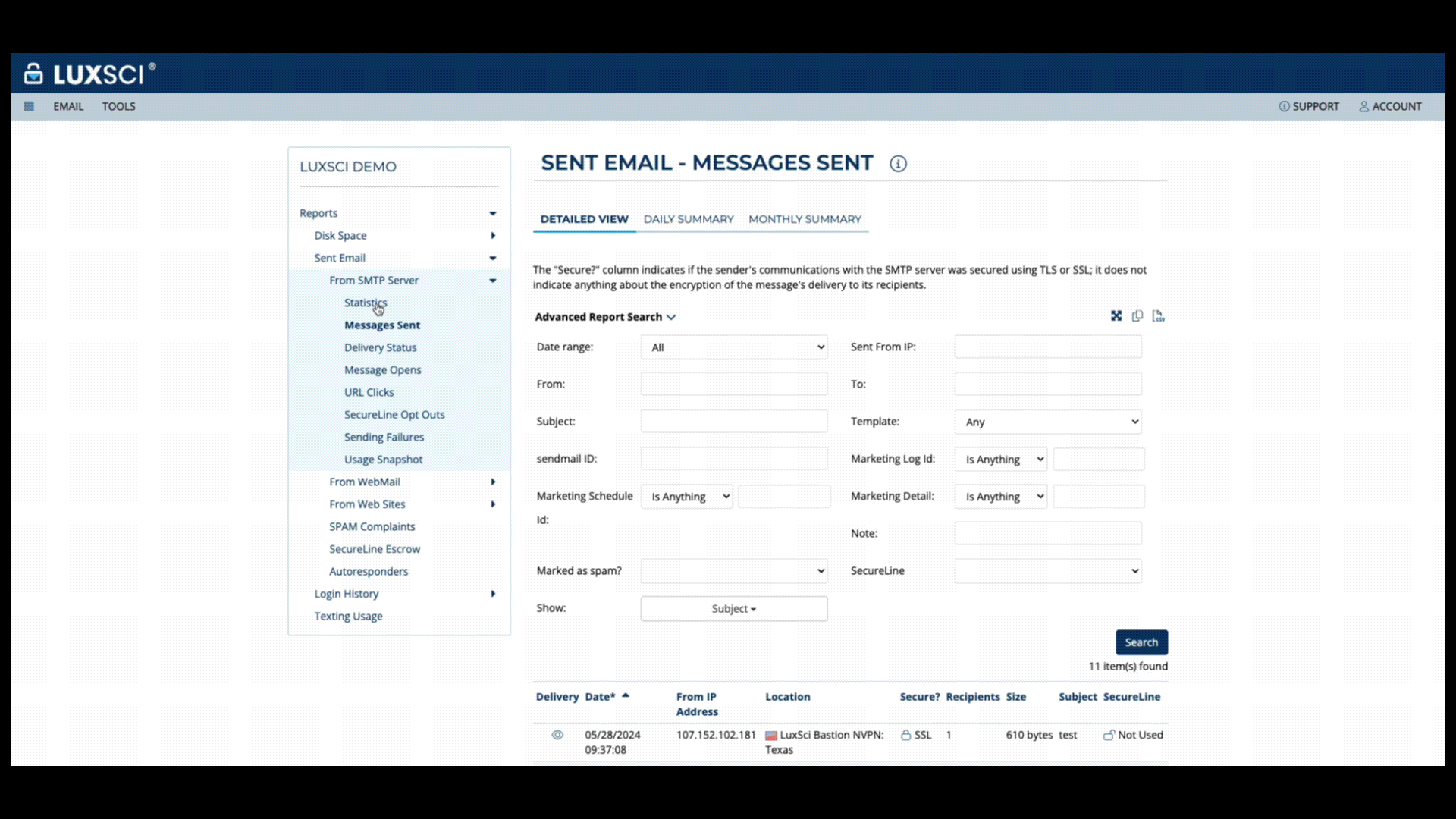Maintaining HIPAA compliance is a critical requirement for healthcare providers, payers and suppliers dealing with protected health information (PHI). Ensuring your email communications align with those standards can be, well… tricky. With fines reaching into the millions, non-compliance isn’t something you want to risk. We’ve seen it time and time again when engaging with our customers and prospects. Unfortunately, many organizations fall into the trap of believing they’re sending HIPAA compliant emails because they’ve applied what we call “self-certification” strategies—without fully understanding what’s required to be compliant.
Are you 100% sure that you’re sending HIPAA compliant emails?
In this blog post, we’ll delve into the risks of being non-compliant, explain why self-certification strategies often lead to problems, and provide a HIPAA-compliant email checklist to help ensure your organization avoids the pitfalls self-compliance.
The Importance of Sending HIPAA Compliant Emails
HIPAA (Health Insurance Portability and Accountability Act) was established to ensure the protection and privacy of patients’ PHI. This law mandates that any entity handling PHI must implement strict safeguards to prevent unauthorized access, breaches, and exposure of sensitive patient data.
In today’s digital world, where healthcare communications often take place over email and other digital platforms, maintaining HIPAA compliance becomes even more complex. It’s not enough to merely think you’re compliant; you must be able to prove it beyond a doubt.
What Is PHI and Why Does It Need to Be Protected?
As a quick reminder, PHI refers to any data that can be used to identify an individual and that relates to their past, present, or future health condition. This can include anything from personal identification information to medical records and billing information to email exchanges that reference patient care.
Examples of PHI include:
- Names
- Addresses
- Birth dates
- Social Security numbers
- Medical history and diagnoses
- Treatment plans & prescriptions
- Medical device usage and services
- Appointment information
- Billing, payments and insurance information
The Risks of Not Being 100% Sure About HIPAA Compliance
In addition to losing sleep at night, the consequences of sending non-compliant emails can be significant. Non-compliance can result in hefty penalties, ranging from $100 to $50,000 per violation, depending on the severity and intent. In some cases, these fines can even surpass $1.5 million annually.
But it’s not just the fines—PHI exposure opens the door to a variety of serious risks, including the reputational damage that can stem from breaches of patient data that can impact peoples’ lives and the future of your business. Patients place immense trust in healthcare providers and organizations to safeguard their sensitive information, which stretches beyond HIPAA-compliance to overall data security and privacy. The loss of patient trust is difficult—if not impossible—to regain once compromised.
The Problem with DIY HIPAA Compliance
Simply put, self-certifying HIPAA compliance is a recipe for disaster. Many companies and healthcare organizations falsely believe that if they conduct an internal review or have implemented basic security measures, they’re fully compliant. But without the right expertise and the right technology in place, especially encryption, it’s easy to overlook crucial details.
Even if you have encryption in place or think your emails are safe, these minimal steps can create a false sense of security. True HIPAA compliance requires continuous monitoring, updating of policies, and regular training to address potential risks.
A Checklist for Sending HIPAA Compliant Email
Sending HIPAA compliant email means ensuring you’ve implemented the following safeguards:
1. Encryption Standards for HIPAA Compliance
All emails containing PHI must be encrypted both at rest and in transit—end-to-end. Ensure your email service provider offers high-grade encryption protocols, like TLS (Transport Layer Security), for sending and receiving messages, and flexible options, including dedicated cloud infrastuctures for the highest levels of data protection.
2. Secure Access and Authentication
Set up multi-factor authentication (MFA) and role-based access controls to limit who can access emails containing PHI.
3. Business Associate Agreements (BAA)
If you’re using a third-party email provider, you must have a signed BAA. This agreement ensures that the provider will uphold HIPAA’s security standards.
4. Data Backup and Recovery
Make sure your email system has a secure backup and recovery solution. Data breaches can happen, but having a recovery plan will minimize damage and maintain compliance.
5. Employee Training and Awareness
Ensure your employees are regularly trained on HIPAA guidelines. Human error is one of the leading causes of HIPAA violations, so proper education is key.
6. Regularly Audit Your HIPAA Compliance Strategy & Practices
HIPAA regulations evolve as technology advances. Conducting regular compliance audits ensures your security protocols are up to date with the latest best practices.
7. Avoiding Overconfidence in Your Own Processes
No matter how confident you are in your HIPAA strategy, bringing in an external auditor can provide an unbiased view of your compliance status and help identify overlooked vulnerabilities.
Don’t Let HIPAA Self-Certification Fool You!
HIPAA compliance is not something you can afford to be unsure about. The risks—both financially and reputationally—are too great. While it may be tempting to “self-certify” or assume your current measures are sufficient, doing so can leave your organization—and your patients and customers—vulnerable. Instead, ensure that you follow a comprehensive strategy that includes best-in-class email encryption, secure access, regular audits, employee training, and support from external experts.
Don’t take shortcuts when it comes to protecting sensitive health information and ensuring HIPAA compliance—get it right from the start.
If you’d like to get your questions on sending HIPAA compliant email answered, don’t hesitate to reach out to talk with one of our experts—and learn more about the healthcare industry’s leading HIPAA-compliant email, text and marketing solutions from LuxSci.
Contact us here!












 SSL and TLS play critical roles in securing data transmission over the internet, and AES-256 is integral in their most secure configurations. The original standard was known as Secure Sockets Layer (SSL). Although it was replaced by Transport Layer Security (TLS), many in the industry still refer to TLS by its predecessor’s acronym. While TLS can be relied on for securing information at a high level—such as US Government TOP SECRET data—improper or outdated implementations of the standard may not provide much security.
SSL and TLS play critical roles in securing data transmission over the internet, and AES-256 is integral in their most secure configurations. The original standard was known as Secure Sockets Layer (SSL). Although it was replaced by Transport Layer Security (TLS), many in the industry still refer to TLS by its predecessor’s acronym. While TLS can be relied on for securing information at a high level—such as US Government TOP SECRET data—improper or outdated implementations of the standard may not provide much security.